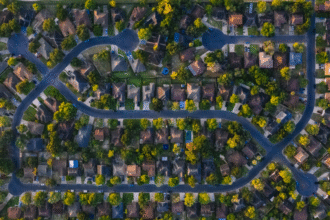Storm clouds are building over Canberra, marking the start of a season that can bring both beauty and danger. From October through March, our region is more likely to experience sudden storms, bringing torrential rain, damaging winds, hail, and lightning. For many of us, these are simply inconvenient disruptions. But for others, they can cause real harm: flash flooding, power outages, fallen trees, and even property damage.
This year, the ACT State Emergency Service (ACTSES) is urging every household to prepare now. Being “emergency ready” is about more than just reacting when a storm hits, it’s about making sure you, your family, and your home are protected before, during, and after.
Why Preparation Matters
We all know Canberra weather can change in an instant. One moment, the sky is clear; the next, a wall of rain sweeps across town. Severe storms don’t give us much warning, which is why preparation is crucial.
When gutters are clogged, branches overhang roofs, or outdoor items are left unsecured, small issues can quickly turn into expensive repairs. Power outages and blocked roads can also cut people off from help. The difference between being caught off guard and being prepared often comes down to a few simple steps taken ahead of time.
As ACTSES Chief Officer Steve Forbes explains:
“During storm season, there are simple steps the community can take to stay safe. Checking the weather before heading out and reconsidering plans if severe weather is forecast can make a big difference. Creating a survival plan is also important — it helps you and your family know exactly what to do if a storm hits.”
Steps You Can Take Today
The ACTSES recommends a few straightforward actions that can make a big difference when storms roll in.
Around Your Home
- Clear your gutters and downpipes. Blocked gutters cause water to overflow into ceilings and walls, leading to flooding inside your home.
- Trim back trees and branches. Strong winds can turn weak branches into dangerous projectiles.
- Secure loose items. Outdoor furniture, trampolines, and even bins can become airborne in severe winds.
- Check your roof. Loose tiles or damaged sheets can let water in quickly.
- Review your insurance. Make sure your home and contents insurance is up to date and covers storm damage.
For Your Family
- Create an emergency plan. Decide where to shelter, how to stay in touch if power or phones go down, and who will check on vulnerable relatives or neighbours.
- Prepare an emergency kit. Include essentials such as a torch, spare batteries, first aid supplies, important documents, bottled water, non-perishable food, and any required medications.
- Stay informed. Download weather and emergency apps, and tune in to local radio for real-time updates.
On the Go
- Check the forecast before travelling. If storms are predicted, delay unnecessary trips.
- Avoid floodwaters. Never drive, walk, or ride through floodwaters, it only takes a small amount of moving water to sweep you away.
- Know who to call. For storm or flood assistance, call ACTSES on 132 500. For life-threatening emergencies, call 000.
What To Do During a Storm
Even with preparation, storms can be frightening. Knowing how to respond calmly and safely helps minimise risk.
- Stay indoors and away from windows. Flying debris and hailstones can cause injury.
- Unplug electrical appliances to protect them from power surges caused by lightning.
- If you’re driving, pull over safely and turn on your hazard lights. Avoid parking under trees or powerlines.
- Keep pets inside and calm.
After the Storm
Once the skies clear, it’s tempting to head straight outside. But storm damage can create hidden hazards.
- Be cautious of fallen powerlines, which may still be live. Stay well away and report them to ActewAGL.
- Watch for weakened trees or branches that could fall later.
- Photograph any damage to your property for insurance claims.
- Check on neighbours, especially older residents or those living alone, who may need extra support.
A Community Effort
Storm readiness isn’t just about protecting our own homes, it’s about looking out for each other. Minister for Police, Fire and Emergency Services, Dr Marisa Paterson, highlights this community spirit:
“Canberra, now is the time to get ready. Even if your home isn’t directly impacted, storms can still disrupt your daily life. Power outages, blocked roads, and loss of phone or internet services can leave you isolated or without access to help. Knowing what to do before, during and after a storm can really make the difference in how impacted you are.”
In past storm seasons, ACTSES volunteers have been called out hundreds of times across Canberra, clearing fallen trees, covering damaged roofs, pumping floodwater, and helping families stay safe. Their dedication is a reminder of the value of community resilience.
Chief Officer Forbes adds:
“If you need help during a storm or flood-related emergency, call the ACTSES on 132 500. Our highly trained volunteers are ready to assist. I want to thank them for their dedication and hard work, and I look forward to seeing the incredible support they’ll provide throughout the season.”
Building a Culture of Preparedness
Preparedness isn’t a one-time task. It’s a habit. Just as we service our cars or replace smoke alarm batteries, storm preparation should become part of our seasonal routine.
The ESA’s Be Emergency Ready campaign is a great resource, offering checklists, planning guides, and tips tailored to Canberra conditions. Taking 30 minutes this week to review these resources could save hours, even days, of stress if a storm hits.
Think of it this way: every action you take now is an investment in peace of mind. Clearing gutters might feel like a chore today, but it could prevent thousands of dollars in damage tomorrow. Writing down a family emergency plan might feel unnecessary, but it can make all the difference when panic sets in.
Where to Find More Information
- Visit the ACT ESA website for storm preparation resources: esa.act.gov.au/be-emergency-ready/storms.
- Follow ACTSES on social media for updates and safety advice.
- Save key numbers in your phone: 132 500 for SES, 000 for emergencies, and your insurance provider’s claims line.








